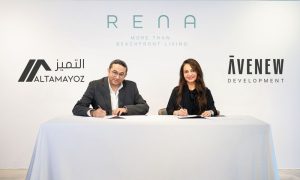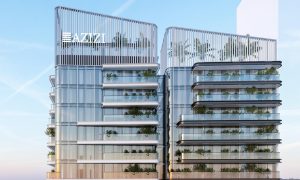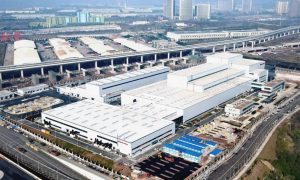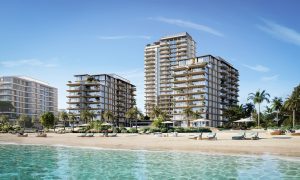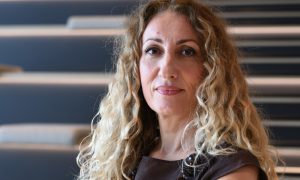In profile: The Abu Dhabi Urban Planning Council
Big Project ME meets some of the people putting the Vision 2030 plan into action

Back in the 90s and early 2000s, Abu Dhabi had a reputation as something of a bureaucratic city. The early part of the UAE’s boom as a tourist and commercial destination was firmly fixed on Dubai, with companies and visitors alike flocking to the emirate, lured by its shopping malls and attractive business propositions.
Meanwhile, Abu Dhabi continued to push along at its own pace, driven by its strong oil-based economy and its position as the seat of power in the UAE. In many respects, it resembled a sleeping giant, waiting for a catalyst to come along and shake it awake.
In 2006, that catalyst arrived in the form of a mandate issued by HH Sheikh Mohamed bin Zayed Al Nahyan, Crown Prince of Abu Dhabi and Chairman of the Executive Council to the General Secretariat of the Executive Council, the Abu Dhabi Council for Economic Development and the Department of Planning and Economy.
Known as Vision 2030, this mandate was the first step towards the creation of a long-term roadmap for economic progress for the emirate, through the establishment of a common framework that aligns all policies and plans, while engaging the private sector in their implementation.
Building upon the foundations set up by the Abu Dhabi Policy Agenda 2007/2008, the initiative was produced by a taskforce that joined stakeholders from the public and private sector, while also receiving significant expert support from international institutions.
Their mandate was clear: to conduct an exhaustive assessment of the key enablers for economic growth and to create a comprehensive long-term economic vision, with explicit targets, to guide the evolution of the Abu Dhabi economy through to the year 2030.
With the wheels for Vision 2030 now firmly in motion, the task of guiding the activities through to a successful conclusion falls to the Urban Planning Council (UPC), the strategic planning agency for the UAE capital.
In its broadest definition, the UPC is the body responsible for defining the shape of the emirate, which includes the associated land use and the development of professionally designed, sustainable and well-managed urban environments that incorporate world-class transport and infrastructure systems that ultimately support the implementation of Vision 2030.
Therefore, to get a clear idea of how the Urban Planning Council is going about the implementation of the government’s vision, Big Project ME spoke to three key members from various departments – Yasmeen Al Rashedi, planning manager, Estidama; Yousif Ahmed Al Fahim, infrastructure planning manager; and Talal Al Ansari, senior associate planner.
With the interviews taking place in the wake of an announcement that the UPC is undertaking the next phase of its data collection and information sharing strategy through the creation of a database of Abu Dhabi’s real estate developments, it was an opportune time to ask about UPC’s role as a facilitator for collaboration and coordination in the industry.
One key component is Estidama, the program helping contractors, consultants and developers to build Abu Dhabi according to green building standards, as Yasmeen Al Rashedi explains.
“The word sustainability is very much embedded in our planning approach. I think that’s a really key thing to note. All of the policy frameworks that the Council has produced as part of the Vision 2030 suite of documents – which is for Abu Dhabi, Al Ain and the Western Region – have very key strategies or targets, from a planning perspective, that are shaped around sustainability and Estidama.
“The whole objective of what we do is to improve the quality of life and liveability within the emirate of Abu Dhabi. To do that, you really need to have plans that take into consideration the needs of the people and the communities. That is showcased through our community and city planning approach.”
Given that Estidama already encourages the sharing of information so as to create a more effective monitoring arm, Al Rashedi explains that the creation of a database for Abu Dhabi developments will only make the program more effective.
“It’s already something that is embedded within Estidama, though it’s a little different to the agreement between developers and the UPC. The reason for that is because we have a very strong monitoring arm.
“Within the lifecycle of a project, we have design, construction and then operation. We’re now beginning, with a number of projects in and around Abu Dhabi, to monitor and measure the output of buildings that have been built. Data sharing for these projects is already in place, which is fantastic.
“What that begins to do is demonstrate and showcase the achievements of green development. It also allows us to analyse what those results are, in order to feed into the policies and development team and improve the policies. If we notice, within the results, that these pilot projects are achieving the savings that we had initially targeted or put in within our range, and we know the experience of the project owner, then we can push those boundaries.
“We know it can be done, we’ve already witnessed it and gone through it with the industry and heard their feedback about what they found challenging versus what was really easy to do. So if we know what those things are, then we’re able to modify and evolve the policies and requirements within the rating systems to push those boundaries and drive the targets that we have set for ourselves, or that the government is setting for developments right now,” she adds.
Talal Al Ansari, senior associate planner at UPC, is in agreement on the benefits such collaboration can bring, and says that the UPC needs to communicate with both sides – the construction industry and government departments – to create a viable framework that benefits all stakeholders.
“The UPC has been in operation since 2007. Since then, there have been a lot of projects going through us. Whether it is developers, consultants or even contractors, that understanding of what is the quality, the standards, the regulations, has actually gone back and forth and been refined to become the typical standard now, so that everybody knows exactly what they’re doing,” he explains.
This dialogue also extends to the end users – the public – he reveals. Ultimately, the people using the finished project should feel comfortable and relaxed in an environment where they’ll be sending the majority of their time.
“We try to focus more on the public because they’re the end user for us. I may be designing the city, and I could think that the best thing for the area could be a park. But in reality, they could need a community facility like a library or a store.
“So what we do, in multiple places, is that we actually create that public outreach where we listen to them. One example of this is actually a survey that was published about three years ago, where we tried to understand the shortage of community facilities and open public spaces,” Al Ansari recollects.
“There were surveys for 10,000 households asking about the different areas – what they had, what they liked and what they’d like to have. Sometimes, we’d have people come and say, ‘We want a Disneyland!’ But of course, it comes down to ‘Can we do it?’, ‘Does it make sense?’
“That’s what we study. In the end, our job is to understand their needs, but to also give them what is best – based on our experience, knowledge and the shared knowledge amongst the government agencies – for that area as well.”
This sense of cooperation extends to contractors and developers, Al Ansari adds, pointing out that one of the major works in progress is an update of the Public Realm Design Manual, which will have certain aspects refined and improved. To do so, the team has involved developers, government entities and consultants to offer feedback and find out what the real issues are, whether it’s application of standards or even a lack of clarity in existing regulations. Al Ansari points to a recent survey done for the Commercial Signage Regulations policy as an example of how this collaboration can benefit all stakeholders.
“This was done in collaboration with the Department of Economic Development. They were the main stakeholders that we had to work with, they were responsible for the authorising and giving the permits for the signage. But once that started, there was actually a workshop for the signage developers and manufacturers – what materials did they have? What are the techniques they’re using? If we say that they require a certain material, does that impact the cost? Because there’s a liability on the other as well.
“We needed to understand the parameters before we move towards finalising or developing the policies. Once that was done, we initiated the training and invited all the signage manufacturers to the DED, and we gave courses about what are the signage required and so on.”
Perhaps this sense of collaboration is most evident in the way that the Infrastructure Planning Team works with developers and government bodies to provide effective technical input and feedback to the other teams in the UPC.
Part of the team’s role is to provide, or come up with, planning manuals like the Urban Street Design and Urban Corridor Design manuals. As such, they need to ensure that the data the planning teams receive is up-to-date and a reliable reflection of what is actually built on the ground.
To do so, Yousef Al Fahim, infrastructure planning manager, says that his team coordinates with both government stakeholders and the private sector to create plans that give the best use of existing infrastructure, while ensuring that new plans don’t prove to be a burden on current systems.
“Through the urban development team, what we’ve done is that we have ongoing coordination for a lot of projects. We can see from them what is actually working, in terms of our manuals especially. This is the main medium that they use from us – the Urban Street Design and Urban Corridor Design manuals – they basically implement them and then we can see from this what are the shortfalls or challenges they face.
“At the UPC, we’re trying to streamline this process [of collaboration]. Before these manuals were established, every project had to go through different stages of obtaining approvals. But now, with these roads, streets or corridors that have already been pre-agreed with government agencies, this reduces the amount of time that needs to be taken for approval, so long as the developer or the consultant satisfies the requirements that are set in the manuals.
“Usually, the approvals follow in a quick process. As for how we deal with it, it’s through the Urban Development team, where any new project is provided to the government agencies for their review or comment. If there is anything, they are dealt through one medium in the UPC, and these comments are then provided to the developer or consultant [through us].”
Clearly, there has been tremendous progress towards the goal of collaboration and communication. The obvious next question is to see how far this idea can spread. Having already been trialled to great success in Abu Dhabi, all three of the UPC members speaking to Big Project ME say that expanding the processes and methodology is on the agenda.
“Personally, I see this as a symbol of our success,” says Talal Al Ansari. “We’re being approached by other entities, that’s currently happening. We have Qatar approaching us, we have Kuwait looking at Plan 2030. Some entities in Sharjah are approaching the UPC to understand how we’re operating and what the manuals are, and so on.”
“There are also some projects that almost force you to apply [planning and regulations]. Look at Etihad Rail. It links the UAE all the way from Abu Dhabi to Fujairah, so it’s more of a UAE-level, rather than just Abu Dhabi-level, project. So that discussion is always there, and the best part is that we’re being recognised by the region and they’re coming to us for ideas and support, and asking us to share policies. Not because they want to take it on, but because they want to adapt and amend it to their own contexts and needs.”
Yasmeen Al Rashedi chimes in, pointing out that Estidama is continuously looking to evolve its review process and learn from the development community in Abu Dhabi as it goes through its own growth process. By encouraging developers to go beyond what is required in their quest to receive strong green ratings, she believes the knock-on effect across the industry will be huge.
“What we begin to do is try to find opportunities, together, with the development community within Abu Dhabi. We’re now beginning to look at the urban development process and evolve it so that it allows for opportunities and incentives to be a part of the review. It’s about being able to find opportunities where it’s a win-win situation.
“Abu Dhabi is benefiting, the community is benefiting and the developer is also benefiting, because it’s making their project more feasible, more viable and financially sounder. I think it’s about working with them to find and build these incentives within the development review process. I think it’s fantastic, and that’s where we are now,” she concludes.
UPC and Estidama stats
• 26 – Number of developments approved in Q2 2015
• 2.3 million sqm – Total GFA covered by the 26 developments
• 708,999sqm – Total GFA of projects approved in Q1 2015
• 440 – Number of project and master plans delivered by UPC to date
• 73.6 million sqm – Total GFA of project and master plans delivered by UPC to date
• 11,878 – Number of villas awarded a Pearl rating by Estidama to date
• 1,004 – Number of buildings awarded a Pearl rating by Estidama to date
• 1,080 – Number of villas awarded a Pearl rating by Estidama in Q2 2015
• 567 – Number of trainees educated in nine Estidama training sessions in Q2 2015
Developers sign data-sharing charter for Abu Dhabi projects
Abu Dhabi’s Urban Planning Council (UPC) says it has signed a charter with 19 developers to share more data about residential, commercial and retail projects, in a move aimed at improving future land management. The UPC says the new charter will build on existing data-sharing agreements with developers, to provide details on their completed and ongoing projects.
Data provided by residential property developers will include the number of units they have already built, have under construction or are planning for the future. They will provide a breakdown of the unit size, number of bedrooms, value per square metre and percentage of units sold.
Hotel developers will be required to disclose the star grading and construction status of their current and future stock, as well as the number of hotel apartments in their portfolio.
Commercial property developers will provide data such as the class of office being built, whether it is planned or under construction, sales value, rent per sqm and the type of occupant.
Retail developers will break down their portfolio in terms of type, from a mega mall to a local convenience store, and occupant.
Using these details, UPC will be able to build a Real Estate Data Management database on supply and demand in the residential, commercial, retail and hospitality sectors in Abu Dhabi. This will be done through land use reports and projections, and frequent data updates.
“This is a key milestone for the Abu Dhabi real estate sector. The new database builds on the strong foundations for data collection already in place by deepening the level of data shared and the frequency of collection. Seeing 19 of the emirate’s key developers work together is indicative that the real estate community understands the mutual benefit of collaboration,” says HE Falah Al Ahbabi, director general at UPC.
The 19 participants include Rosewood Hotel Abu Dhabi, Aldar Properties, Mubadala Real Estate and Infrastructure, Al Qudra Holding, Masdar and National Investment Corporation.


